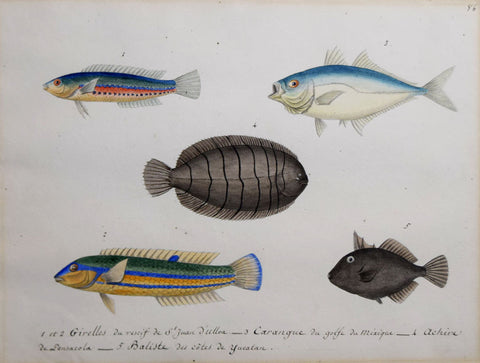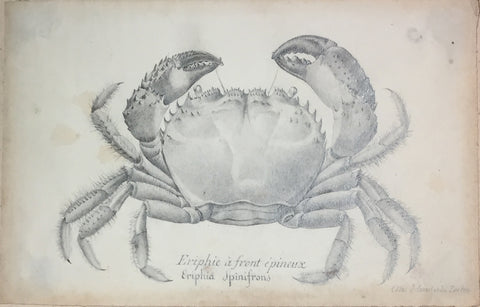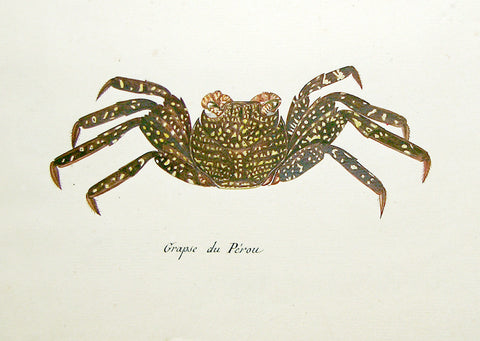
Jan Brandes (Dutch, 1743-1808) Fish Study
Fish Study
Sheet size: 10 1/2 x 15 3/4"
Inscribed upper center: 12 May 1787
Inscribed left center: 13 May 1787
Inscribed lower right: 14 May 1787 Waare Groote
The large yellow and black fish may be the sargassum fish, anglerfish, or frog fish (Histrio histrio), a frogfish of the family Antennariidae, the only species in its genus. It lives among Sargassum seaweed, which floats in subtropical oceans. The scientific name comes from the Latin histrio, meaning a stage player or actor, and refers to the fish's feeding behavior.
Jan Brandes was a Lutheran minister who worked for the Dutch East India Company (VOC). He embodied the Dutch Age of Enlightenment spirit, emphasizing toleration, secularization, classification of knowledge, and popularization. Protestantism, especially the Lutheran Church, was against idolatry. Thus, the arts were secularized, and landscape and still-life paintings were popularized. Jan Brandes was a product of this philosophy and produced a valuable collection of drawings of the VOC’s settlements in Sri Lanka, South Africa, and Java.
Brandes was born in Bodegraven in Gelderland (now the Netherlands) in 1743. He attended Latin school at Breda and continued his studies in Lutheran theology at Leiden in 1763. He moved to Greifswald in Swedish Pommerania to complete his education. After returning to the Low Countries in 1767, Brandes quickly received a parish minister position in the Lutheran congregation in Doetinchem. He remained there for eight years before moving to Batavia (now Jakarta, Java) on the recommendation of Amsterdam’s Lutheran church council, where he became a reverend in the Dutch East India Company (VOC) until 1785.
Brandes stayed in Java for six years and then ministered to VOC communities in Sri Lanka and South Africa before returning home in 1787. As strongholds of the Dutch East India Company, both had thriving Dutch communities in Colombo and Cape Town, which required a minister’s services. However, Brandes’s talents extended beyond that of a preacher to drawing, and he produced a valuable and insightful collection of studies of both areas. He recorded everything he saw, describing Javanese, Sinhalese, and African social culture. His study was genuinely exemplary and remained a testament to the Dutch Enlightenment. In later life, Jan Brandes settled in Sweden, becoming a wealthy burgher, but continued his passion for recording his surroundings.
The Rijksmuseum in Amsterdam now holds many of the Brandes watercolors, making it a rare opportunity to acquire works by this artist.
We Also Recommend





